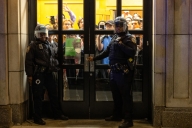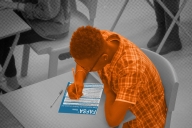You have /5 articles left.
Sign up for a free account or log in.
Ambitious college-completion goals set by the Obama administration and the Lumina Foundation are unlikely to be met, according to a new analysis from Educational Testing Service, the standardized-assessment organization.
The federal goal, set in 2009, was for 60 percent of 25- to 34-year-olds to have earned an associate or bachelor's degree by 2020. Lumina's goal is for 60 percent of working-age adults to earn a "high-quality" certificate, associate or bachelor's degree by 2025.
Given the current rate of expansion of the adult population in the U.S. and of degree production, 2041 is the year ETS says the federal government's target could be met. The projected date for Lumina's working-age goal to be met is 2056, ETS said.
However, racial and ethnic achievement gaps are expected to persist even as both of those projected dates arrive, according to the analysis. For example, African-Americans, American Indians and Alaska Natives, and Hispanics are not expected to reach the federal goal by 2060, which is as far out as the U.S. Census Bureau currently forecasts.
"Many game-changing innovations may emerge as the nation progresses toward the goal of regaining pre-eminence in education," the report concludes. "Extraordinary efforts and innovations are needed to ensure that the overall population accelerates progress toward the goals, and that the African-American, American Indian/Alaska Native and Hispanic populations accelerate their pace in closing gaps with Asian-American and white population groups in rates of degree attainment."
Jamie Merisotis, the president and CEO of the Lumina Foundation, responded to the report with a written statement.
"Nobody said it would be easy. Lumina Foundation’s own 60 percent goal by 2025 is still eight years in the future. Any analysis of census data and economic trends would call that optimistic. But what choice do we have? In education, as everywhere else in life, nothing really important happens without a deadline. If we don’t set goals, we can’t measure progress," he said. "We agree with much of what ETS has to say about the difficulty of achieving the goal. That’s one reason our new strategic plan for work through 2020 includes a much sharper focus on the at-risk student populations called out in the report, which relies on much of the same data we publish online in our own Stronger Nation report."








